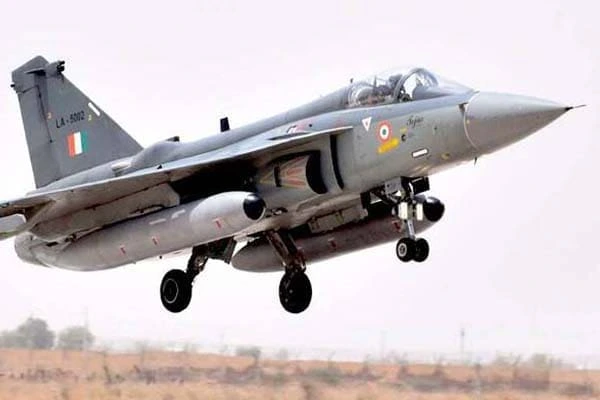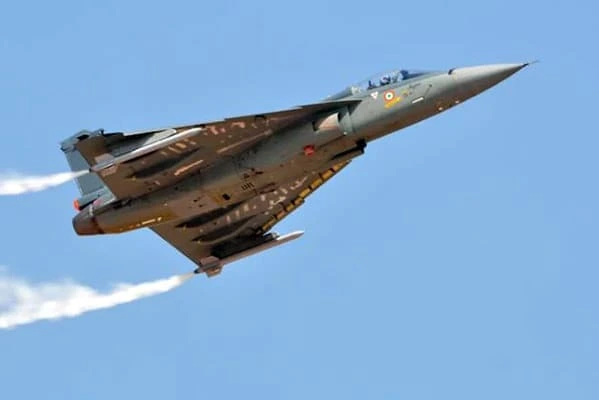The Indian Air Force (IAF) officially announced its intention to procure about 100 additional Made-in-India Light Combat Aircraft (LCA) Mark 1A fighter jets, in Sep 2023. It’s a significant move aimed at strengthening India’s aerospace capabilities.
The announcement was made by Air Chief Marshal VR Chaudhari, the Chief of the IAF while receiving the first C-295 transport aircraft in Spain. He underscored the pivotal role of the LCA in replacing the ageing MiG-series fleet, which includes the MiG-21, MiG-23, and MiG-27 aircraft.
Air Chief Marshal Chaudhari said, “With the retirement of these ageing aircraft, it is imperative that we bolster our inventory with LCA class aircraft. Therefore, in addition to the 83 LCA Mark 1A aircraft we have already contracted for, we are advocating for the acquisition of around 100 more.”
The objective in acquiring these domestically produced aircraft is to phase out the older MiG-series fighter jets in its fleet. The proposal has been formally submitted to the defence ministry and other national security stakeholders. This decision to procure approximately 100 more LCA Tejas fighters follows a comprehensive review meeting chaired by the Air Force Chief, which included key stakeholders in the indigenous fighter jet program, such as Hindustan Aeronautics Limited (HAL).
The order, if approved and realised, would represent a substantial expansion of the Indian Air Force’s LCA Tejas fleet. Over the next 15 years, the IAF is expected to have 40 LCA Tejas, more than 180 LCA Mark-1A, and a minimum of 120 LCA Mark-2 aircraft in its inventory.
The LCA Mark 1A stands as an advanced iteration of the Tejas aircraft, featuring upgraded avionics and radar systems compared to the initial 40 LCAs supplied to the Air Force. The first deliveries of LCA Mark 1A is anticipated around February 2024. Boasting a substantial indigenous component of over 65 percent, the LCA Mark 1A reaffirms India’s commitment to self-reliance in the aerospace sector. This program aligns seamlessly with the Atmanirbhar Bharat and Make in India initiatives, highlighting the nation’s unwavering dedication to achieving self-sufficiency in aerospace technology and manufacturing.
Earlier, in August 2023, after the fighter jet successfully fired the Astra indigenous Beyond Visual Range (BVR) air-to-air missile, the IAF chief held a review meeting of the indigenous fighter jet programme with all entities involved including the HAL.
The Air Chief brought out that the LCA has been the flag bearer of the IAF efforts towards indigenisation of its aircraft fleet. He said that given the nature of this project of national importance, it is required that all stakeholders adopt a collaborative approach towards its success. The programme has been the harbinger of Atmanirbhar Bharat and Make in India initiatives of the nation. More importantly, it is a flag bearer of India’s self-reliance in the aerospace sector.
During the review, it was brought out that all contracted fighter variants of the LCA Mk 1 had been delivered to the IAF. Representatives of HAL had assured the chief of the timely delivery of the contracted twin-seaters in the coming months, as well. Further to the LCA Mk 1, 83 LCA Mk-1A aircraft have also been contracted by the IAF in 2021. The CMD of HAL had assured those present that the deliveries of this advanced variant of the LCA would commence by February 2024.
While complimenting HAL, the Air Chief indicated that based on these assurances, the LCA Mk 1A could be inducted in a newly raised squadron in one of the IAF’s operational bases, early next year. Notwithstanding the project delays that were brought out during the course of the review, the CAS lauded the efforts of all stakeholders and emphasised on the need to incorporate the lessons learnt from the LCA programme into future indigenous design and developmental projects. With timely deliveries of the more capable variant, the LCA Mk 1A is likely to see increased deployments at forward bases, besides participation in International exercises in the days to come.
The order for 100 LCA Mark1A fighter jets would make way for fighter jets re-entry into the Indian Air Force in very large numbers. In the next 15 years, the IAF will have 40 LCA, over 180 LCA Mark-1A and at least 120 LCA Mark-2 planes. The last order for LCA Mark1A was for 83 aircraft and the first plane would be delivered around February 2024.
The advanced version of Tejas aircraft, LCA Mark 1A has more advanced avionics and radars than the initial 40 LCAs being supplied to the Air Force and will have more indigenous content. The LCA Tejas programme has been the harbinger of Atmanirbhar Bharat and Make in India initiatives of the nation. More importantly, it is a flag bearer of India’s self-reliance in the aerospace sector as well as the force’s efforts towards the indigenisation of its aircraft fleet.
Parliamentary Panel’s Concerns
The Parliamentary Standing Committee on Defence report tabled in the House on — has expressed ‘concern’ over the existing fighting force levels of the IAF.
The committee was informed by the MoD that delivery of Light Combat Aircraft Tejas MK-1A fighter aircraft will commence from February 2024 and complete by January 2029 and the case for procurement of 114 Multi-Role Fighter Aircraft (MRFA) is under progress.
Expressing their concern over the existing force level in the Air Force, the committee desired that “all-out efforts be made to expedite supply of Tejas”. The committee urged the MoD to make a time-bound schedule. The committee noted that plan for theaterisation of armed forces, or creation of integrated theatre commands has been considered by the forces at the highest level.
LCA Navy Trainer Prototype
The LCA Naval trainer prototype NP5 successfully completed its maiden flight on August 18 from HAL airport.
Designed and developed jointly by ADA and HAL, LCA Navy can also serve as an effective training platform for Indian Navy pilots for operations from the aircraft carriers. Addition of NP5 aircraft to LCA Navy prototype fleet will help to accelerate flight testing activities which will provide designers vital inputs towards design and development of the Twin Engine Deck Based Fighter (TEDBF), the prestigious futuristic carrier aircraft programme of the country.
The new prototype NP5 will undertake field and carrier operations from both INS Vikramaditya and INS Vikrant, ADA said, adding it will incorporate all improvements identified during exploitation of NP1 and NP2 is a production ready aircraft. It will also incorporate the production standard airframe and rainwater compliance, maintainability improvements as well as futuristic system advancement.
The first trainer prototype NP1 was flown on April 27, 2012 and the fighter prototype NP2 was flown on February 7, 2015. Both Naval Prototypes (NP1 and NP2) have achieved major landmark milestones like Ski Jump take off and arrested landing demonstrations on Shore Based Test Facility (SBTF) at Dabolim Airport, Goa and operations from indigenous aircraft carriers. The aircraft demonstrated 18 arrested landings and Ski Jump take offs from INS Vikramaditya in January 2020, including hot refuelling capability. Recently, LCA Navy participated in the carrier trials from INS Vikrant and performed 10 Ski Jump take offs and arrested landings on February 6, 2023.
The LCA Navy is equipped with state-of-the-art technologies such as fly-by-wire flight control system, glass cockpit and advanced mechanical systems. The aircraft can be operated seamlessly both during the day and night. It features advanced hands free ski jump take-off and landing flight control modes. LCA Navy prototypes are carrier compatible and can operate with Air-to-Air weapons for combat missions.
Twin-Seater Trainer Version Handed Over to IAF
The IAF got its first Tejas twin-seater trainer version aircraft on October 4 from HAL. The twin-seater trainer version aircraft is part of the LCA Tejas project, the largest R&D program ever undertaken in India.
As part of the Tejas contract between the HAL and the Indian Air Force, the defence public sector unit has to supply eight twin-seater trainer aircraft to the force. HAL has an order for 18 twin-seaters from the IAF, with plans to deliver eight by the fiscal year 2023-24 and the remaining ten by 2026-27.
The LCA Tejas Twin Seater is a lightweight, all-weather multi-role 4.5 generation aircraft, featuring advanced technologies such as relaxed static stability, quadruplex fly-by-wire flight control, carefree manoeuvring, an advanced glass cockpit, integrated digital avionics systems, and advanced composite materials for the airframe.



















